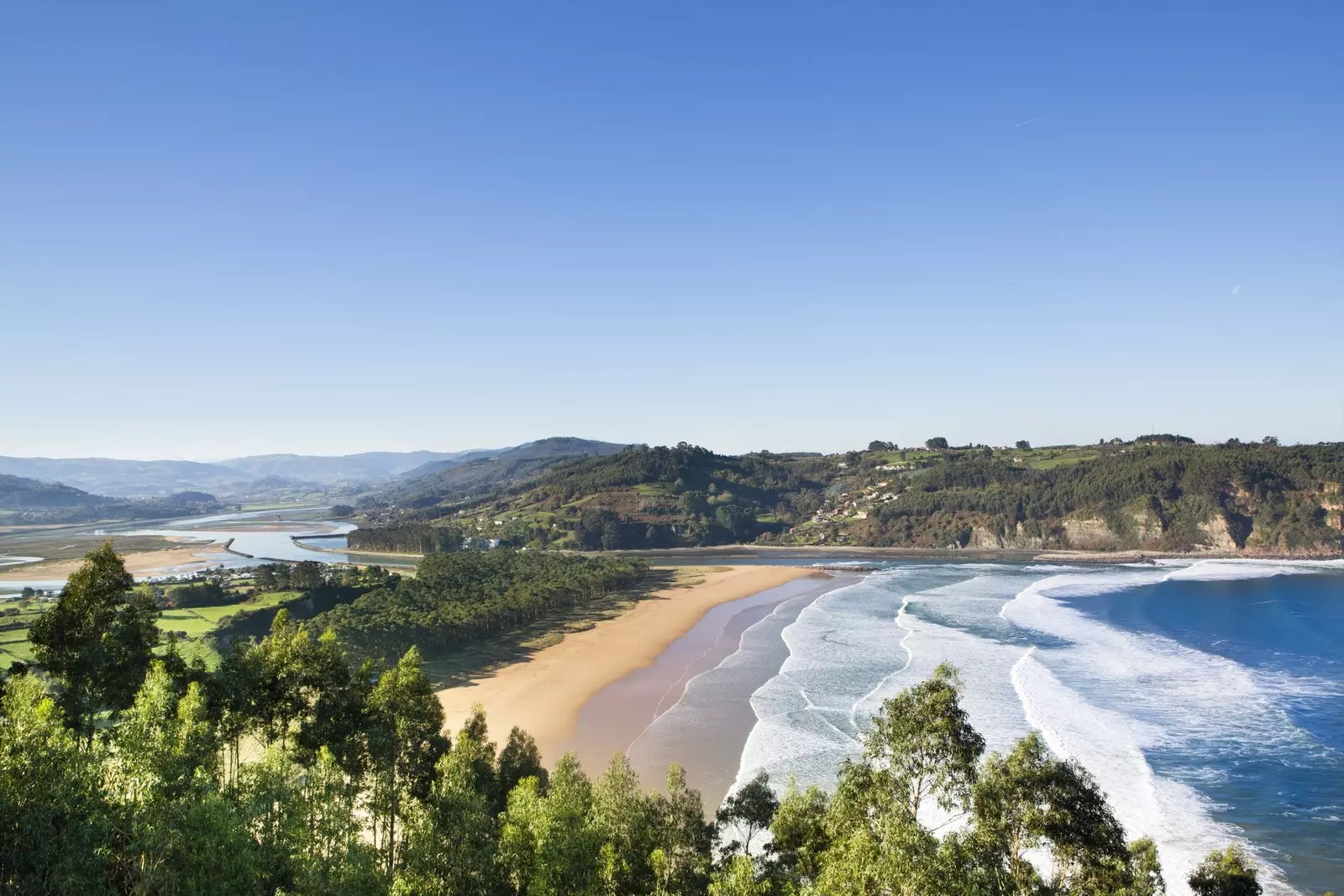
Villaviciosa estuary and Rodiles beach, in the Asturian Cider Region.
There are triangles that trap by their magnetism, like Bermuda. Others for its museums, such as the Art Museum in Madrid. The Hess Triangle continues to appear as the smallest and most expensive lot in the world in Manhattan travel guides and, in Thailand, the Golden Triangle continues to offer incredible views of the natural border that the Mekong River makes with Laos and Myanmar . But, if there is an area of the world that with its triangular shape has us dazzled, that is without a doubt the Asturian Cider Region…
For obvious reasons, of course. Let's not forget that cider is known in the region as 'the elixir of life', the one that "makes you want to talk, share, puts you in a good mood and makes your heart happy", as indicated by the association that under the name Comarca de la Sidra includes six municipalities in central-western Asturias: Bimenes, Cabranes, Colunga, Nava, Sariegu and Villaviciosa.
But in this region dedicated to cider production there are many more things to discover than wine presses or cider houses: a rural landscape dotted with natural spaces, some of the best beaches in the Principality, old mansions with coats of arms and Indian mansions, Romanesque temples, rural accommodation with creative restaurants... Welcome to the region where Asturias smells like apples.
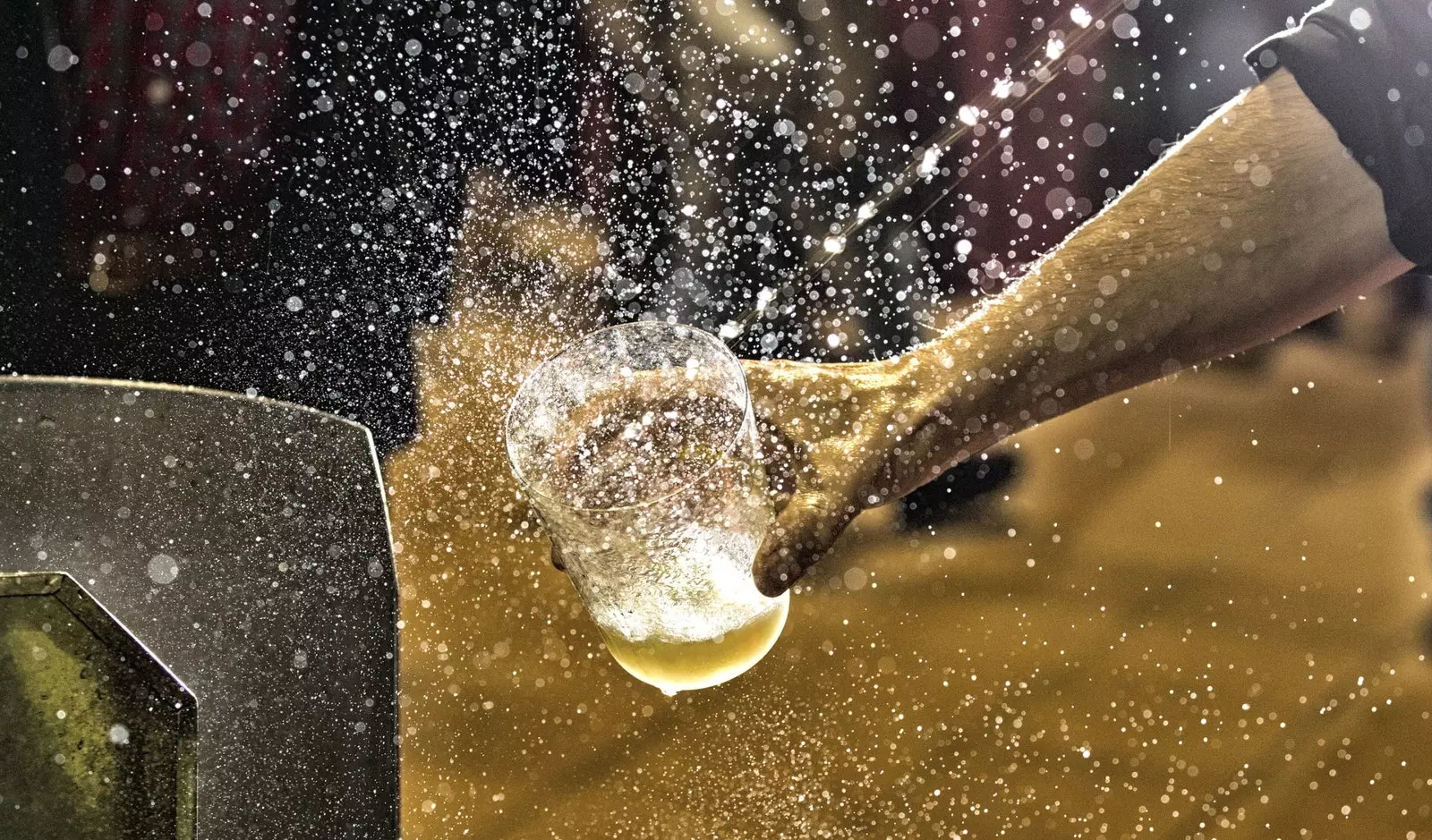
Pouring cider, known as the 'elixir of life'.
WHAT TO SEE
the path to see the blossoming of the apple tree (El Floriar del Pumar), that starts in the fishing village of Lastres and reaches Martimporra, in the heart of the council of Bimenes, it turns white and pink between the end of April and the beginning of May , but traveling the less frequented roads and paths of the region the days after the bridge on October 12 becomes quite a show, that of the harvest of the apple.
Another path to walk is the one that connects the village of Melendreros with Fayacaba, in the Sierra de Peñamayor, a space of unique environmental value that houses a sheepfold (place where cattle and shepherds gather at night) known as Les Praeres, which is accessed by a mountain road that leaves behind some incredible views over the municipality of Nava.
Precisely in Nava is the Cider Museum, an exhibition, interactive and educational space in which to learn the secrets of the life cycle of the quintessential Asturian drink. Another museum, the Jurassic museum in Asturias, welcomes visitors to the council of Colunga with its unique shape of tridactyl footprint. Inside, a lot of information about dinosaurs. Outside, next to the nearby Griega beach, traces of Sauropod footprints.
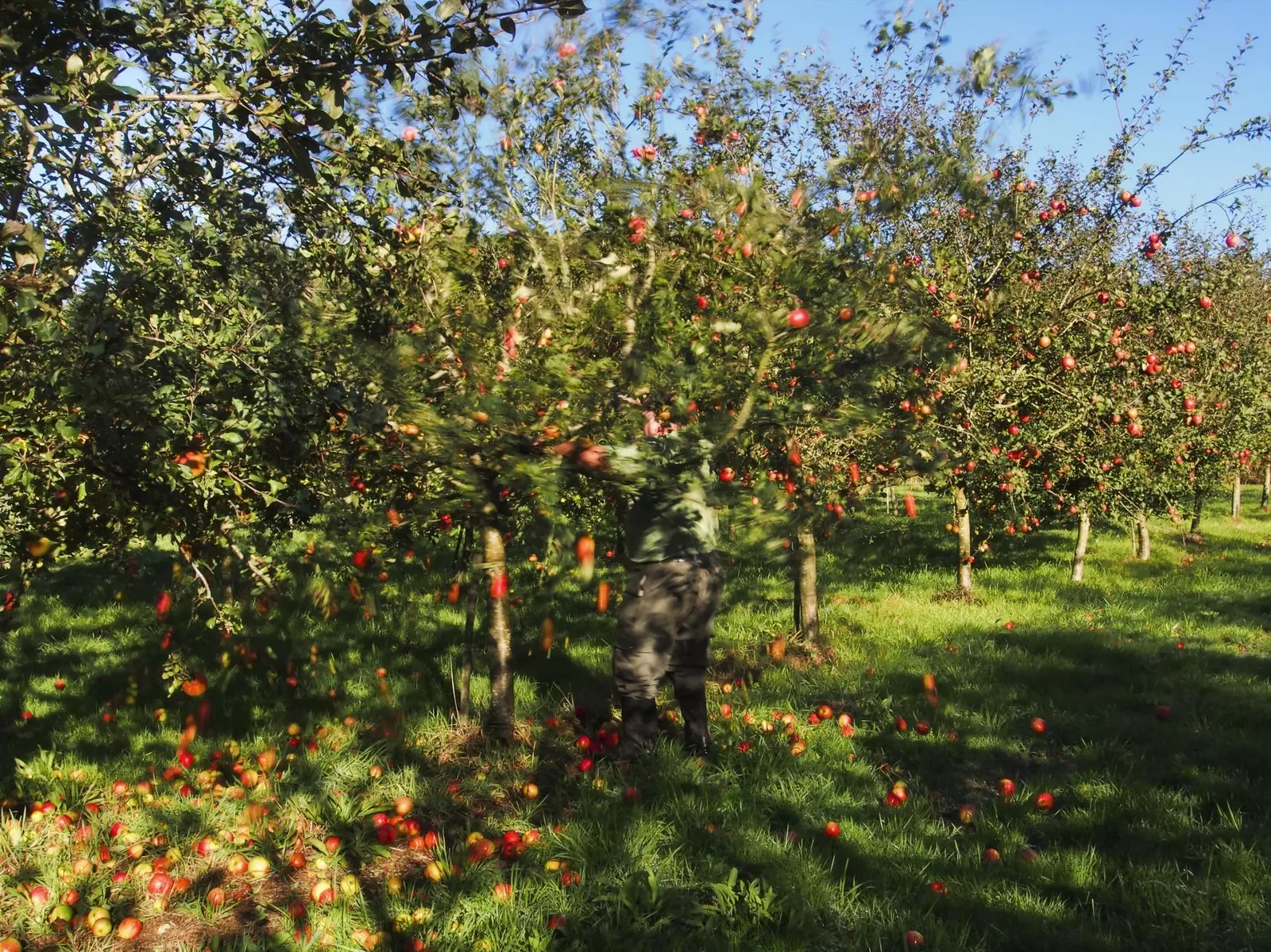
Apple harvest in the Cider Region, Asturias.
In another interior in the cave of San Pedrín, in Narzana, the legend tells that the xanas lived (fairies of the waters or spirits of nature, according to Asturian folklore) until they were expelled by San Pedrín, the small image of San Pedro –found in its karstic interior– which now rests in the Romanesque church of Santa María de Narzana (well, actually, a reproduction, as the original burned down in a fire). The 'Baxá del santu' in procession from the chapel to the cave is considered Festival of tourist interest in the Principality of Asturias.
Nor can you miss another exterior, specifically that of the well-kept houses with balconies (some of Indian architecture) of Torazu , in the council of Cabranes, considered one of the most beautiful towns in Spain and the Prince of Asturias Award for Exemplary Town.
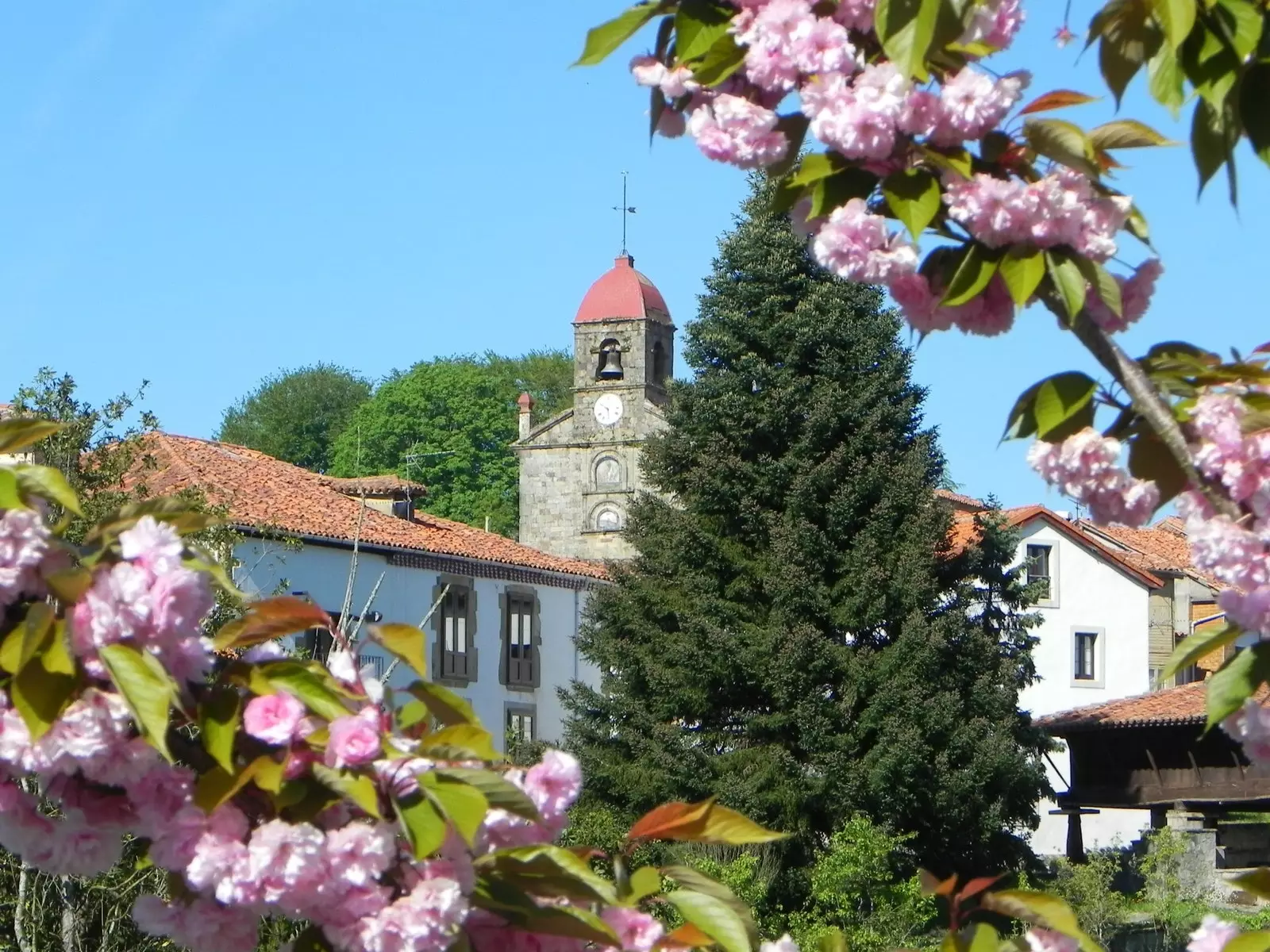
Town of Torazu, in Cabranes, Asturias.
WHAT TO DRINK
The Sidraturismo, thus baptized by the Comarca de la Sidra, will lead us inevitably to the pumaradas (apple plantations, such as the El Noceu ecological farm or the La Rionda farm, with views of the Bay of Biscay), but it will also force us to make (more than) a stop along the way at the cider houses in the area: the modern Casa Mery in the Villaviciosa Town Hall square, the Santolaya fish market and its picturesque architecture, La Barraca and its traditional Asturian cuisine…
Do not suffer if you are not able to pour the cider well. Surely a waiter will be happy to give you this ritual whose objective is to shake the cider, aerate it and emulsify the carbon dioxide. In addition, they usually offer you manual or electric pourers so you can serve yourself the culines (the amount that is poured into the glass).
Are the llagares the places where cider is produced (also the name given to the presses with which the apple is crushed to extract its juice). Temples of alchemists and craftsmen who turn cloudy apple juice into golden cider. Most of them are in Villaviciosa: Sidra Cortina, Sidra Frutos, Sidra El Gobernador...
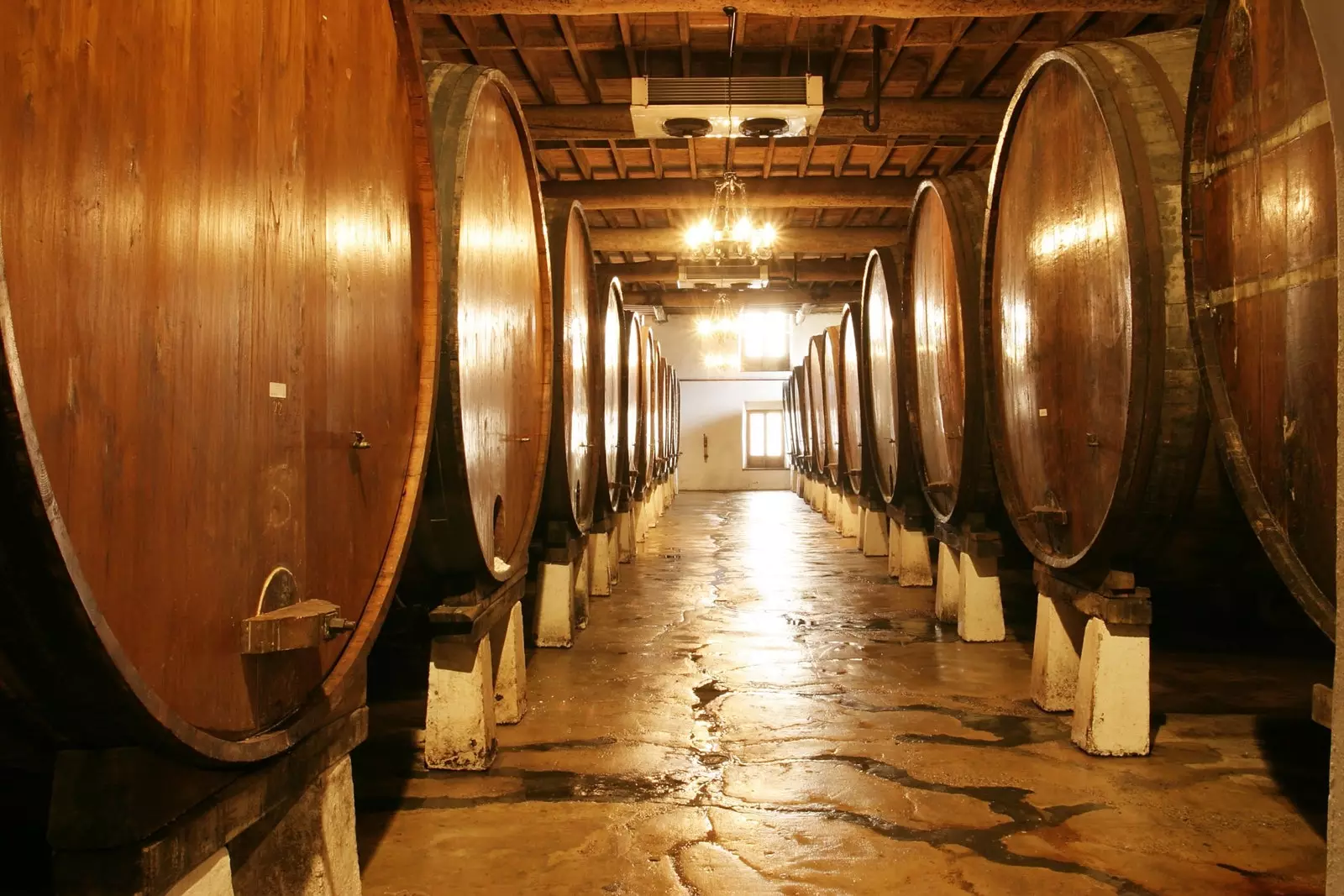
Llagar de sidra, where this drink is produced that "puts you in a good mood".
WHAT TO EAT
Lastres, after the fame obtained thanks to the series El doctor Mateo, needs no introduction, but we will take advantage of these lines to recommend the fish and shellfish that dominate its regional cuisine, like those served at Casa Eutimio, a restaurant overlooking the sea that is best known for its Cacholetus (As you may have deduced, an Asturian veal cub stuffed, among other things, with boletus).
The charming port of Tazones is the only one in Asturias with an imperial character, since Emperor Charles V of Germany (and first of Spain) landed on the peninsula for the first time in it. Asador Marinero, El Centollu, El Rompeolas… They give us a clue of the Cantabrian delicacies that we are going to find in these restaurants.
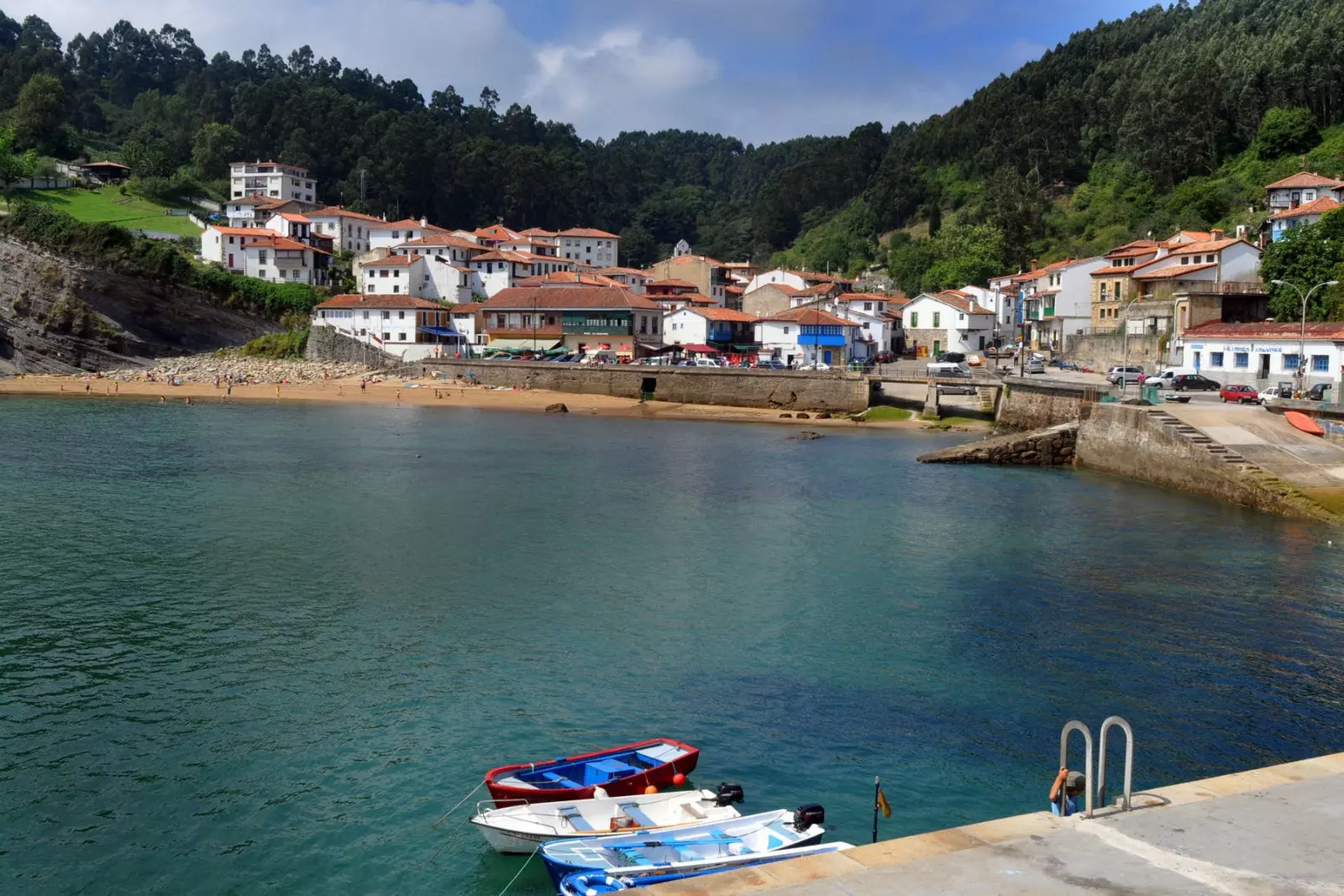
Bowls, Asturias.
Although if what we want is get off the usual (coastal) route, it is best to go to Los Llaureles, a restaurant located in Torazo that is also a rural accommodation (with four rooms and **a gallery that offers incredible views of a Cabranes valley). **
In the Carlos Gallego, who takes care of the kitchen, Together with his brother José Antonio, they offer a 12-step tasting menu that changes every three months. Attention to his dish 'From the leek to the andares', a grilled leek –of which you end up eating even the fried root– that arrives at the table accompanied by toasted hazelnut bechamel and three-milk cheese from La Collada.
Once a year they also carry out gastronomic days that go from installing a live sushi bar to devising a menu paired with cocktails. This 2021 said culinary experience, which will be called Kuidaore, will be held during the month of September and in it Carlos will share kitchen, knives and glassware for a week with sushiman Jesús Patino and mixologist Borja Martínez, both from Only You.
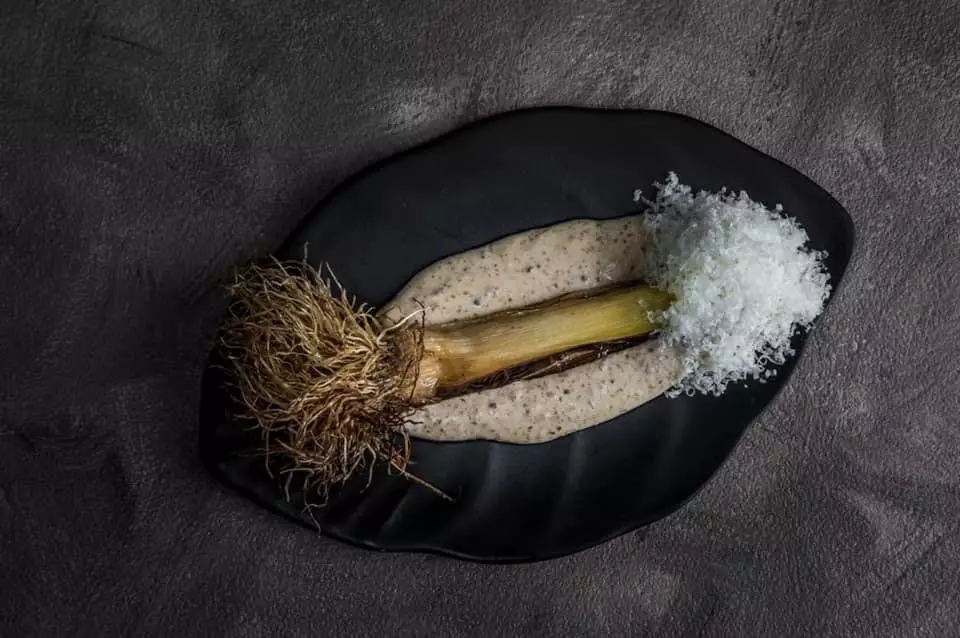
'From the leek to the walk', at Los Llaureles restaurant, Asturias.
WHAT (BEACHES) TO ENJOY
It is Rodiles is the flagship beach of the Comarca de la Sidra. An immense sandy area of great ecological value as it is included in the Partial Nature Reserve of the Ría de Villaviciosa. Its left wave, the Barra de Villaviciosa, is one of the most appreciated by surfers (also one of the most feared, due to its dangerousness); and the pools left by the low tide in the sand, the favorite 'natural pools' of the youngest children. The rest of the bathers will have to group in the area limited by the lifeguards for the bathroom, that swimming in this part of the Bay of Biscay is not a joke.
the golden La Espasa beach is located at the foot of the Sierra del Sueve, the cliffs protect the Merón beach, in the heart of the Asturian Jurassic Coast, the Colunga (or Lliberdón) river flows directly into the Griega beach and the España river does the same on the España beach. So we can say without fear of being wrong that the beaches of the region are a natural paradise, but truly natural.
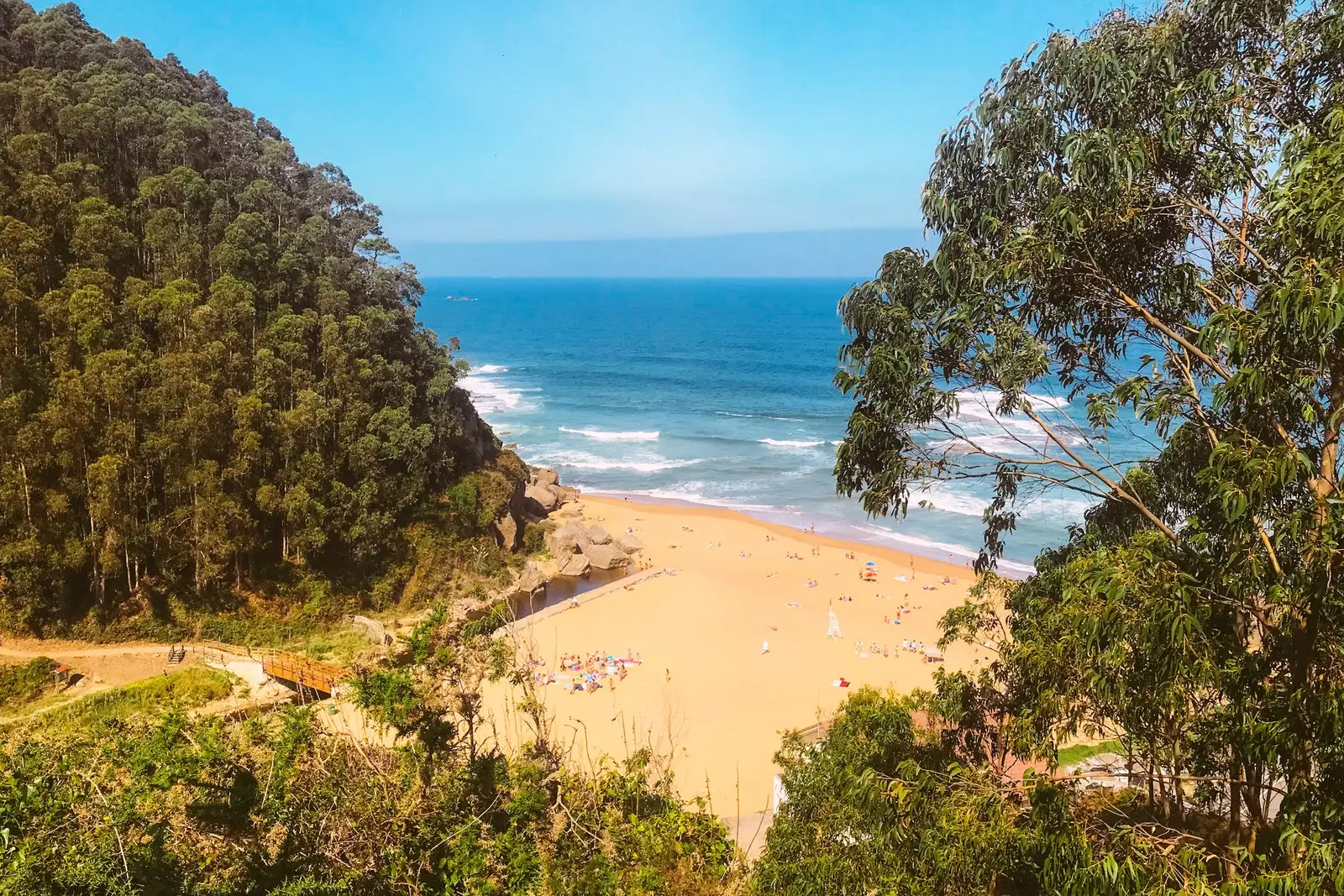
Playa de la Ñora, in the Comarca de la Sidra.
And the Nora? No, we haven't forgotten about her, we wanted to keep the secret, as she protects us from the sun during the afternoons of the hot and humid Asturian summers, but finally the desire (and professionalism) to mention this small beach with strong waves surrounded by eucalyptus trees which forms the border with the municipality of Gijón and has a viewpoint 'hanging' on the cliff.
